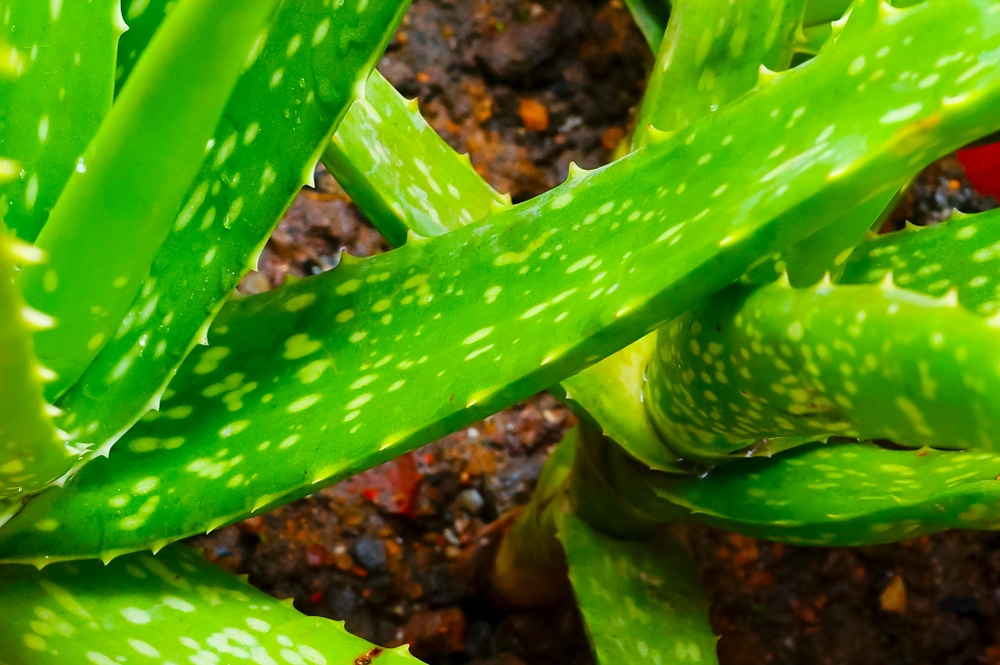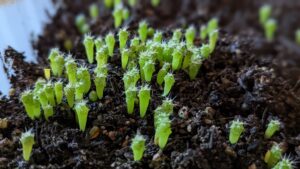When it comes to nurturing aloe vera at home, the type of soil you choose can make a monumental difference in its vitality. While it might seem trivial at first glance, the right soil is essential for providing optimal drainage, aeration, and nutrients. Let’s delve into the best soil options for your aloe vera plant that you can find at Home Depot, and uncover some captivating insights about why your choice matters.
Understanding the Unique Requirements of Aloe Vera
Aloe vera is not your typical houseplant. Its succulent nature means that it thrives in conditions that would wilt other plants. This plant is indigenous to arid climates where water retention can threaten its survival. Consequently, an understanding of your aloe’s needs is the first step in selecting the right soil.
In its natural habitat, the aloe thrives in sandy, well-draining soil. Heavy soils or those high in moisture can lead to root rot—an ailment that is often irreversible. The fundamental goal when choosing soil for aloe vera is to mimic its natural environment, by ensuring that it drains quickly while still providing essential nutrients.
Envision the soil as a support system that facilitates healthy growth, ensuring that your aloe vera plant remains vibrant while preventing water stress. You will want to aim for a mix that balances drainage and nutrition, ultimately promoting robust growth.
Examining Soil Options Available at Home Depot
Home Depot offers a variety of soil mixes and amendments perfect for cultivating aloe vera. When navigating through the aisles, keep an eye out for the following soil types:
Specialized Cactus and Succulent Mixes
One of the most convenient options available is specialized cactus and succulent mixes. These blends are formulated specifically for plants like aloe vera that thrive in drier conditions. Typically, these mixes contain materials such as perlite, pumice, and coarse sand, creating that perfect blend of drainage and aeration.
You will notice that these specialized mixes often avoid organic matter like peat, which retains moisture and can be detrimental to your aloe’s health. By investing in a commercial cactus mix, you are effectively providing your plant with the optimal environment to flourish without the risk of rot.
Creating Your Own Custom Blend
For those who enjoy a hands-on approach, creating a custom soil blend might be the most exciting and personalized option. Combining various components allows you to tailor the soil to your specific environment and preferences. Home Depot stocks a plethora of base ingredients perfect for crafting a unique mix. Consider the following:
Coarse Sand: This component enhances drainage and keeps the soil structure loose. It allows excess moisture to escape quickly while maintaining a light texture.
Pumice or Perlite: Both are volcanic rock variants that provide aeration and drainage. They’re lightweight and assist in preventing compaction, which can suffocate roots.
Organic Compost: While aloe vera doesn’t need a lot of nutrients, a small amount of well-decomposed organic matter can provide essential minerals without overwhelming the plant with moisture.
To construct your blend, consider a ratio of 3 parts cactus mix to 1 part coarse sand or pumice. Adjust based on your specific climate, elevating or reducing the drainage capacity as needed.
Natural Amendments to Enhance Performance
Beyond the basic soil components, consider utilizing natural amendments. These can elevate the soil’s nutrients and work wonders for your aloe’s growth:
Coconut Coir: This organic fiber is a fantastic moisture-retaining amendment that also provides good aeration. It can be integrated into your soil mix to enhance its water-holding capacity without compromising drainage.
Bone Meal or Rock Phosphate: These are excellent options for providing slow-release phosphorus, which is vital for root development, flowering, and overall health. A sprinkle mixed into your custom blend can bolster your aloe’s growth.
Choosing the Right Container
As you contemplate the soil, don’t overlook the importance of the pot itself. The container’s size and drainage capability also play critical roles in your aloe’s success. Opt for a pot with significant drainage holes at the base to prevent water accumulation. Terra cotta pots are particularly favorable, as they allow air exchange through their porous material, helping your aloe thrive.
The Fascinating Art of Soil Care
Once you’ve selected the ideal soil and container, it’s crucial to understand proper soil care. Observe watering schedules closely, as overwatering is a common misstep among indoor gardeners. Allow the top inch of soil to dry out completely between watering sessions. This practice aligns with the natural conditions of an aloe’s native habitat, significantly reducing the risk of moisture-related ailments.
Additionally, keep your aloe vera in a location where it can bask in bright, indirect sunlight. This will not only bolster its growth but will also enhance its aesthetic appeal. Regularly checking for signs of stress, such as discolored leaves or unusual drooping, can help you take pre-emptive measures to ensure your plant’s health.
In conclusion, the journey to cultivating a healthy aloe vera plant at Home Depot begins with an understanding of its unique soil requirements. Whether purchasing a specialized mix or creating your own, the elements of drainage, nutrients, and aeration are critical. By selecting the appropriate soil and pairing it with an ideal container, you can cultivate an aloe vera plant that is both visually stunning and healthily vibrant—promising an enriching experience for years to come.





Leave a Comment